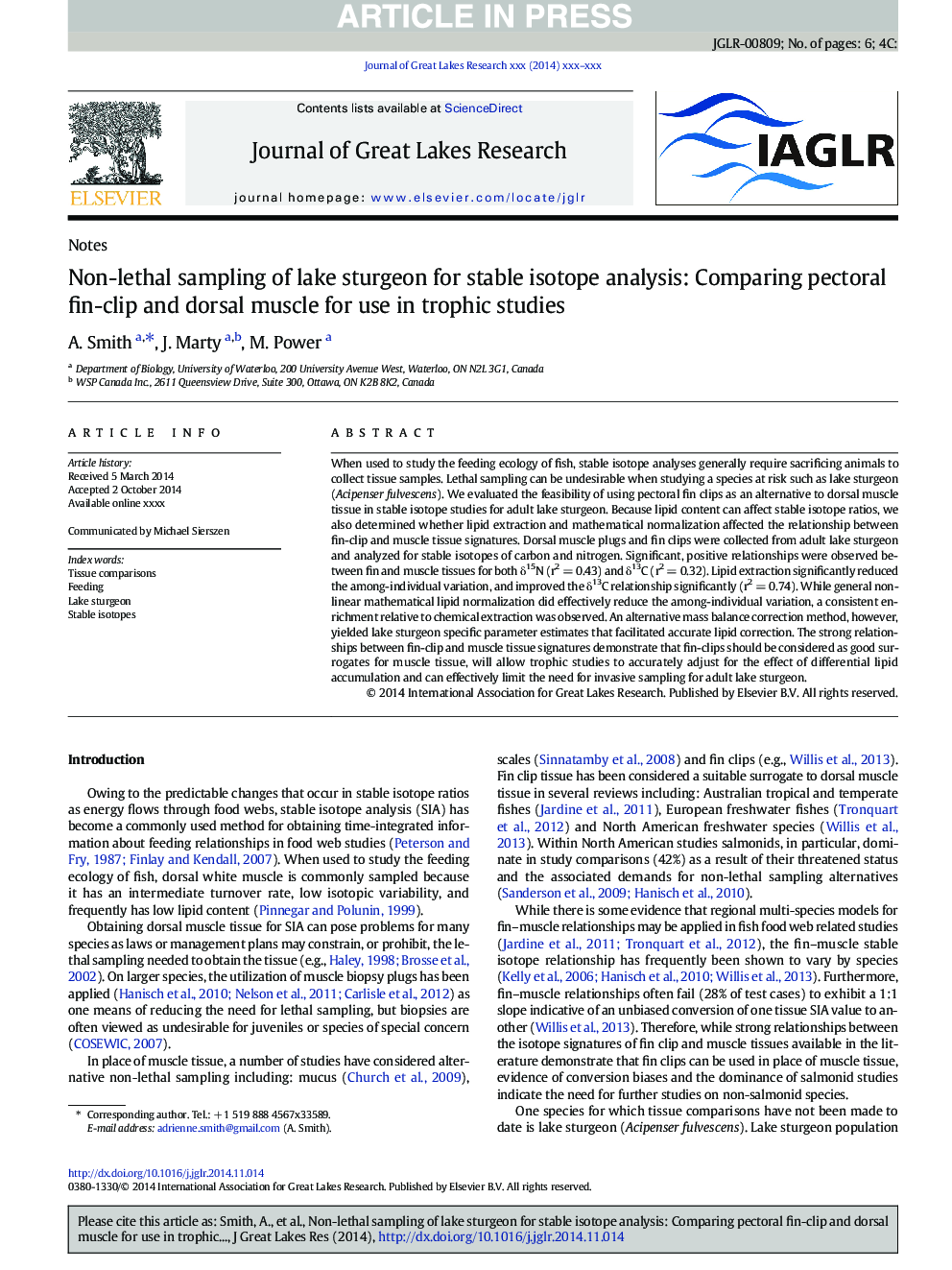| Article ID | Journal | Published Year | Pages | File Type |
|---|---|---|---|---|
| 6305191 | Journal of Great Lakes Research | 2015 | 6 Pages |
Abstract
When used to study the feeding ecology of fish, stable isotope analyses generally require sacrificing animals to collect tissue samples. Lethal sampling can be undesirable when studying a species at risk such as lake sturgeon (Acipenser fulvescens). We evaluated the feasibility of using pectoral fin clips as an alternative to dorsal muscle tissue in stable isotope studies for adult lake sturgeon. Because lipid content can affect stable isotope ratios, we also determined whether lipid extraction and mathematical normalization affected the relationship between fin-clip and muscle tissue signatures. Dorsal muscle plugs and fin clips were collected from adult lake sturgeon and analyzed for stable isotopes of carbon and nitrogen. Significant, positive relationships were observed between fin and muscle tissues for both δ15N (r2 = 0.43) and δ13C (r2 = 0.32). Lipid extraction significantly reduced the among-individual variation, and improved the δ13C relationship significantly (r2 = 0.74). While general non-linear mathematical lipid normalization did effectively reduce the among-individual variation, a consistent enrichment relative to chemical extraction was observed. An alternative mass balance correction method, however, yielded lake sturgeon specific parameter estimates that facilitated accurate lipid correction. The strong relationships between fin-clip and muscle tissue signatures demonstrate that fin-clips should be considered as good surrogates for muscle tissue, will allow trophic studies to accurately adjust for the effect of differential lipid accumulation and can effectively limit the need for invasive sampling for adult lake sturgeon.
Keywords
Related Topics
Physical Sciences and Engineering
Earth and Planetary Sciences
Earth and Planetary Sciences (General)
Authors
A. Smith, J. Marty, M. Power,
